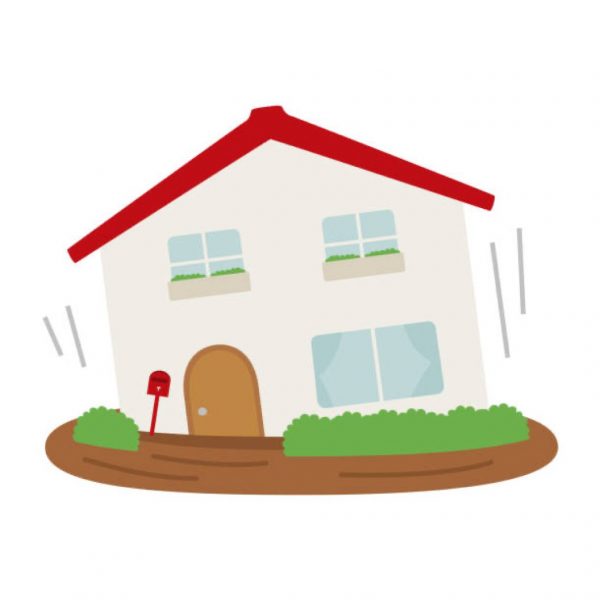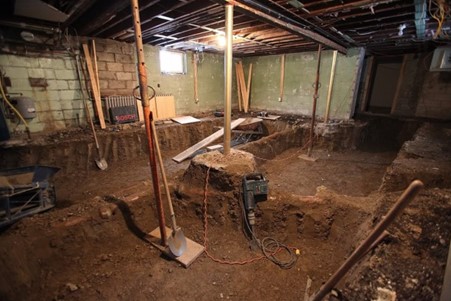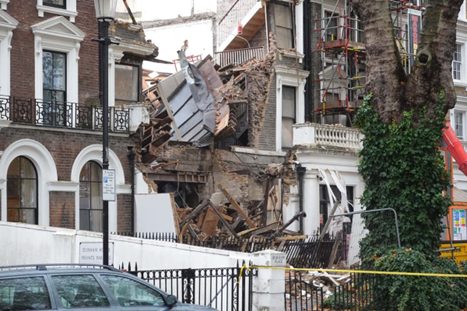A Guide to Ground Movement Assessments
Geotechnical • Industry matters • Regulation
There is a lot of technical talk surrounding the subject of Ground Movement Assessments and Burland Damage Category. But in reality, the only thing auditors, engineers, architects and clients care about is whether the result will be a Category 0 or 1.
This is a shame really, as some of the science behind ground movement is interesting and new. We believe that everyone would benefit from a broader knowledge of predicted ground movements from basement construction and the data gathered from actual monitoring of the phenomenon. However, in the absence of this more progressive approach, what follows is a guide to Ground Movement Assessments and Burland Damage Category Assessments and an explanation of the challenges and complexities.
What is a Ground Movement Assessment (GMA)?
 A GMA uses guidance values, modelled data and user defined information to assess displacement of soil following an excavation and is most associated with the development of a basement.
A GMA uses guidance values, modelled data and user defined information to assess displacement of soil following an excavation and is most associated with the development of a basement.
This is not to be confused with PDisp settlement and heave assessment. These are analytical calculations that can be used to investigate soil movement and the resulting damage to surrounding assets
There are two parts to a GMA: Ground Movement Analysis and Damage Categorisation.
Firstly let’s look at what what guidance is relevant to GMAs

CIRIA C760 “Guidance on Embedded Retaining Wall Design”, Formerly CIRIA C580 is the primary reference. Relevant sections include:
- Chapter 6: Ground Movements
- Chapter 9: Inspection, Monitoring and Maintenance
- Appendix A6: Ground Movements and Case Study Data.
What information does a GMA require?
- Comprehensive description of the proposed development
- Existing and Proposed Development Plans, Sections and Elevations
- Information on surrounding buildings (wall height, length, underlying basements, foundation levels)
- Information on slopes on-site and around the site (elevations and levels are great)
- Understanding of clients’, councils’ and auditors’ requirements
- A borehole log with strength data
- Understanding of Required Foundations (strip retaining walls, contiguous piled wall etc.) and Basement Slab and their founding depths
- CIRIA Ground Movement Curves or User Defined Curves
- Assessment Criteria for Various Assets
- Results from PDisp Settlement and Heave Analysis
- XDisp Software.
How do you undertake a GMA?

Conducting an accurate and professional GMA requires collaborative work with client, architect and structural engineers.
There are several stages as outlined below:
- Define parameters of nearby assets (walls, roads, railways)
- Define the depth of the excavation
- Define suitable ground movement data
- Define models/analyses
- Define damage assessment criteria
- Undertake analysis and assess damage categories of assets
- Combine segments of walls and reassess building damage categories
- Fine tune models and undertake secondary analyses, if required.
The uncertainties/problem areas are:
- Is the ground model ‘solid’ enough and what is the minimum acceptable level of SI, methods of investigation/drilling etc.
- Assumptions on geotechnical parameters and methods used. These can have a major impact on results so always best to use literature references combined with SI information and lab tests
- The degree of conservatism inherited, based on SI information, project magnitude and ‘industry standards’
- The degree of acceptable construction sequence simulation (loads, geometry, stages, long-term movement)
- Ensuring construction is in alignment with the CMS and modelling, specifically with depth
 Damage assessment
Damage assessment
How do you categorise damage to surrounding assets and what are the limitations of current GMA methods and data?
The data from CIRIA C760 is limited :
- There are no horizontal ground movement curves for installations or excavations in sand
- There are no vertical ground movement curves for installation in sand
- There are limited horizontal and vertical ground movement curves in stiff clay
- There are no ‘official’ ground movement curves for soft to firm clays. Data varies significantly
- The case studies within CIRIA C760 are much larger than residential basement developments
- The case studies within CIRIA C760 are for embedded walls, not underpinned walls, which are likely to have less movements.
Points to note: Actual damage is heavily influenced by the quality of workmanship during the construction phase. And should pressure induced movements be incorporated into the assessment?
Other questions Ground & Water must answer:
- What ground movement curve should be applied when the geology varies?
- How do multiple excavations or re-entrant corners within a single basement interact?
- How are slopes accounted for?
- How is the impact of subterranean structures (i.e. adjacent basements) accounted for?
- How is the foundation depth of surrounding walls accounted for?
- Will adjoining walls act structurally as one?
- How can party walls/walls 0m away from the basement be properly assessed?
- What assessment/software is suitable for the assessment?
The reality
Because there are so many variables, we usually end up with a lot of different case scenarios/assumptions and carry out a sensitivity analysis to establish how different values of an independent variable affect a particular dependent variable under a certain set of assumptions.
This requires a high degree of engineering judgement and assumption arguments and these will influence outcomes instead of a straightforward universal approach based on correct and relevant data. This raises the question whether over complicated models are the answer or whether there should be more focus on more relevant and accurate empirical data?
Ground & Water is also continuing to work on answering the remaining uncertainties around basement construction, including uncertainties on:
- Installation of membranes… Radon, vapours, ground-gas, groundwater?
- Will swelling from surrounding soils affect the serviceability of basement walls?
- How will soil heave below the basement slab cause bending on retaining walls?
- How much of an affect does buoyancy have on basements?
- Should buoyancy and pressure related heave be accounted for individually or as one?
- How can the impact of good workmanship be assessed and accounted for?
Ground & Water Senior Engineer Robert Terrell is part of the Association of Geotechnical & Geoenvironmental Specialists’ Underpinning Working Group. The working group is working towards a better understand the magnitude of ground movements that can arise due to underpinning and the construction of small-scale basements, and how ground movement data recorded as part of the construction process can be used to establish a robust framework for the analysis and prediction of potential movements on new projects.

 Damage assessment
Damage assessment